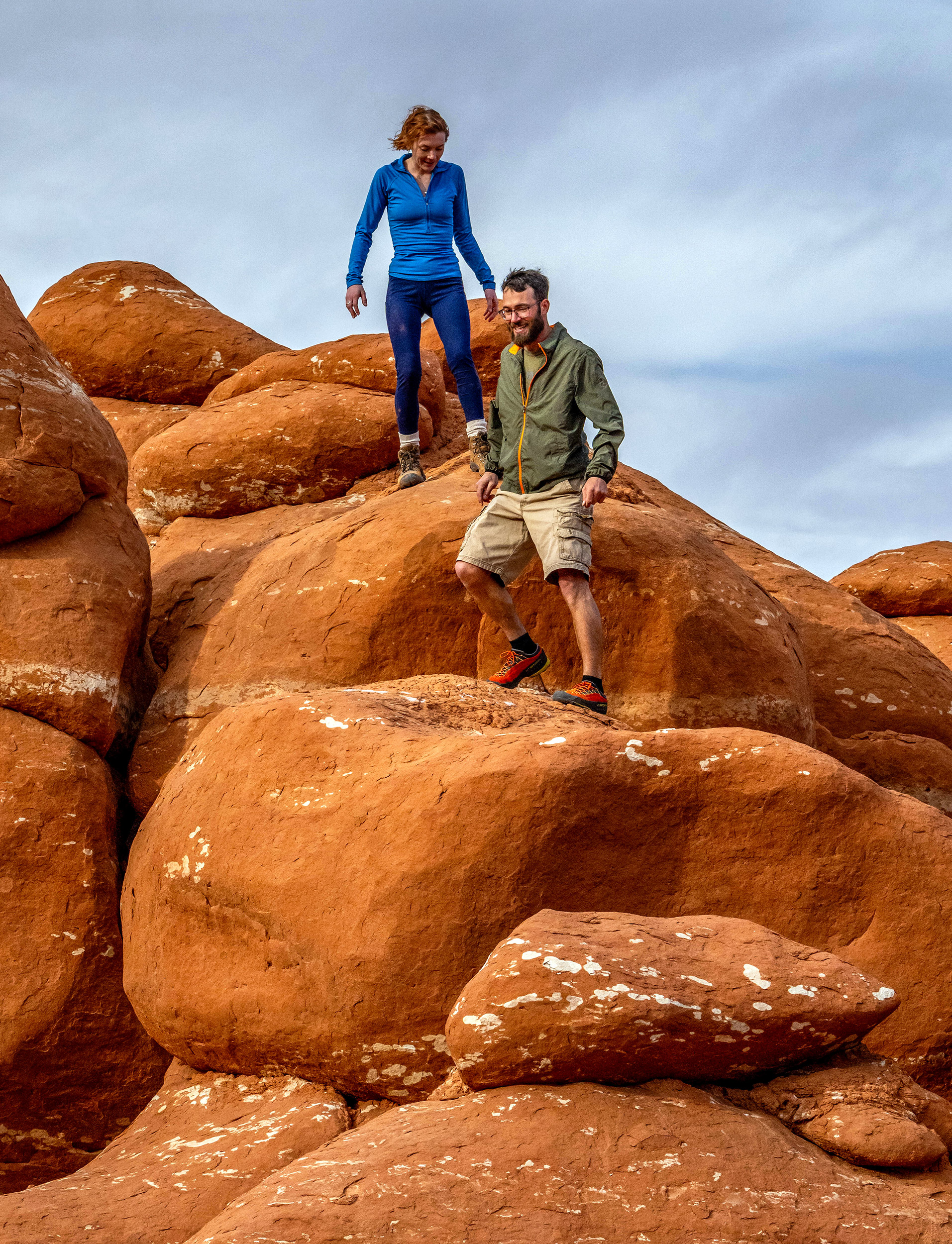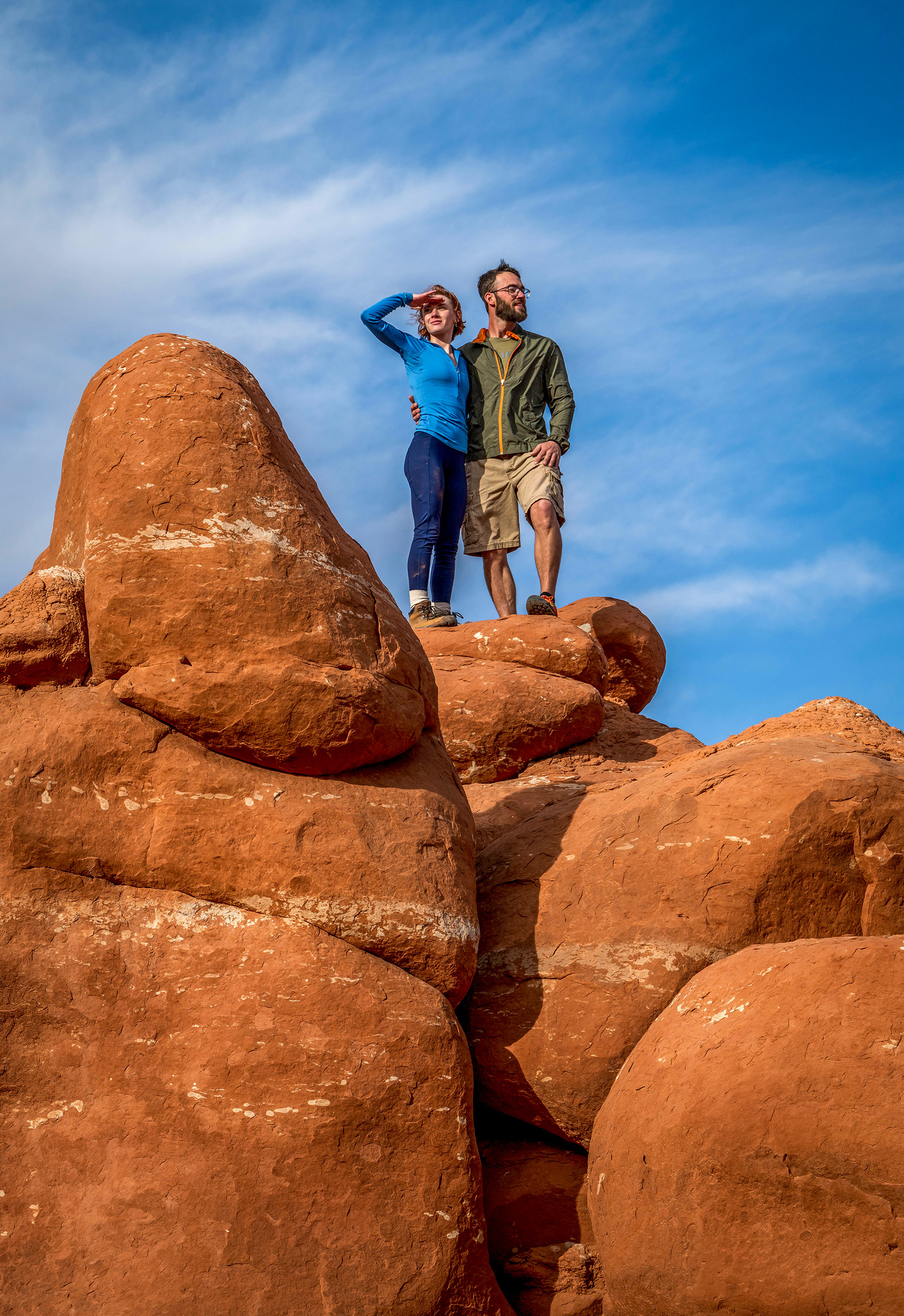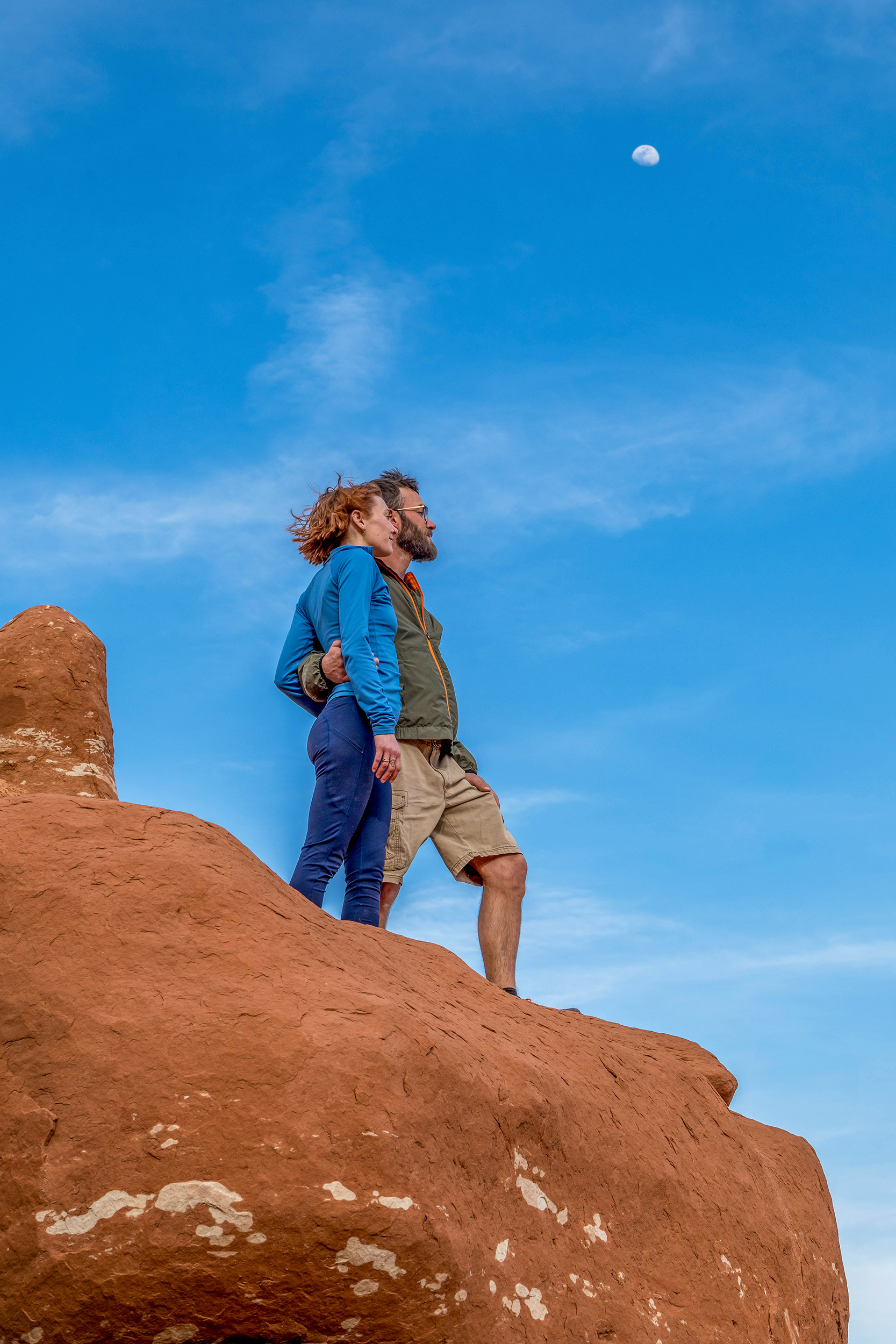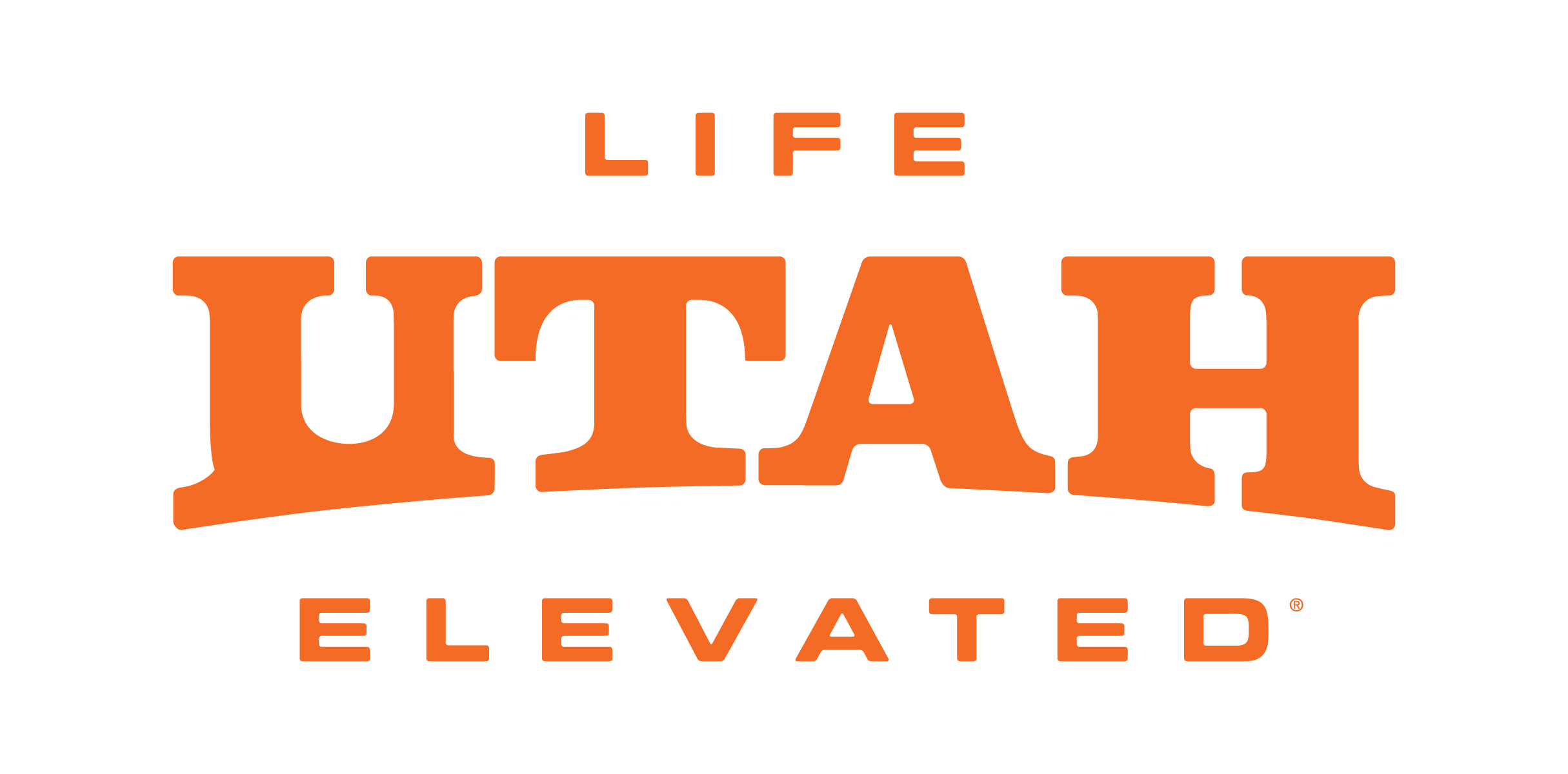LITTLE EGYPT
To experience the Little Egypt Geologic Site, a hidden gem south of Hanksville, Utah, known for its striking Entrada sandstone hoodoos and goblin-like formations reminiscent of a smaller, quieter Goblin Valley.
Experiencing Little Egypt
Little Egypt is a compact, free-to-enter BLM-managed site with no facilities or designated trails, offering a raw, self-guided adventure among red and white sandstone hoodoos, towers, and passages. It’s ideal for families, photographers, and explorers who enjoy wandering. Here’s how to make the most of it:
Explore the Hoodoos
From the parking area, take a short walk (a few hundred feet) down to the valley of Entrada sandstone formations. The site spans about one mile north to south, with whimsical hoodoos, small towers, and narrow passages.
Wander freely among the formations, which resemble Goblin Valley but are less crowded. Look for unique features like the “Torch,” a tall hoodoo in a northern gully, or white bands in the red rock for striking photos. Kids can climb and play on the formations, making it a natural playground.
Time Needed: Spend 1–3 hours exploring, depending on your pace. A quick visit takes 30–60 minutes, while thorough exploration or photography can extend to a half-day.
Photography
The hoodoos are most photogenic at sunrise, when light fully illuminates the red and white formations, or in the morning before cliffs to the west cast shadows by mid-afternoon. Late afternoon visits yield darker, moodier colors.
Capture the contrast of red sandstone against the Henry Mountains backdrop or focus on intricate shapes like spires and ridges. Drone shots can highlight the site’s scale.
Picnicking and Relaxing
Bring a picnic to enjoy in the serene desert setting. The parking area or nearby flat spots are ideal for a quiet lunch with views of the hoodoos and distant mountains. Pack out all trash, as there are no bins.
The remote location offers a peaceful escape, perfect for soaking in the desert landscape’s tranquility.
Stargazing
Little Egypt’s isolation makes it an excellent spot for stargazing. Stay after sunset with a blanket to enjoy the clear, dark skies of southern Utah, unmarred by light pollution.
Check moon phases for optimal star visibility, and bring warm clothing for chilly desert nights.
Tips for a Great Visit
Best Time to Visit: Spring (March–May) or fall (September–November) for mild weather. Summer can be extremely hot, and winter may bring snow or muddy roads. Mornings are ideal for lighting and cooler temperatures.
What to Bring:
– Plenty of water, sunscreen, and hats, as there’s no shade or water on-site.
– Sturdy shoes for walking on uneven terrain.
– A camera or smartphone for photos.
– Trash bags to pack out all waste, preserving the pristine environment.
Respect the Environment: Stick to existing paths to avoid damaging delicate formations. Don’t climb fragile hoodoos, and leave no trace.
Safety: The area is remote, so inform someone of your plans. Cell service is spotty, and emergency services can take hours to reach you. Check weather forecasts, as flash floods or wet roads can be hazardous.
Camping Option: Primitive camping is allowed near the trailhead on BLM land. Set up in the parking area or nearby flat spots, but bring all supplies and pack out waste. Clean up thoroughly to maintain the site’s condition.
Additional Context
Comparison to Goblin Valley: Little Egypt is smaller and less developed than Goblin Valley State Park (35 miles north), but it’s free, uncrowded, and offers similar geological charm. It’s a great alternative for those seeking solitude.
Nearby Attractions: Combine your visit with stops at Hollow Mountain (a gas station carved into rock), Carl’s Critter Garden (quirky sculptures), or Factory Butte (a dramatic butte) for a full day of exploration. All are within 30–60 minutes of Hanksville.
By following this guide, you’ll experience Little Egypt’s unique beauty, from its playful hoodoos to its quiet desert vibe, with plenty of opportunities for stunning photos and memorable moments. For more details or to plan accommodations, check Hanksville’s Whispering Sands Motel or nearby Torrey for lodging.
An Unforgettable Journey Through Utah’s Breathtaking Landscapes and Rich History Experience the breathtaking journey along Scenic Byway 95, also known as the Bicentennial Highway, stretching from Hanksville to Blanding. This hidden gem of Utah’s roadways unveils a treasure trove of…
Getting to Little Egypt
Begin in Hanksville, Utah, a small town at the junction of Highways 24 and 95, about 30 minutes from Capitol Reef National Park. Hanksville has basic amenities like gas stations (e.g., Hollow Mountain) and eateries (e.g., Stan’s Burger Shack) for supplies.
Drive South on UT-95: Head south on State Route 95 for approximately 20.3 miles to mile marker 20.3, just past the Garfield County line. Look for a dirt road on the right (west) side, marked by a sign for “Little Egypt Geologic Site” or “Scenic Backway.” The turnoff is between mile markers 20 and 21, at coordinates roughly 38.097175, -110.621594.
Follow the unpaved road west for about 1.5 miles. The road is generally well-maintained and suitable for most vehicles when dry, but it can become impassable when wet due to clayish soil. After 700 feet, the road curves south. Continue until you reach a signed spur road on the right leading to a large, flat parking area overlooking the site at the base of cliffs.
The drive from Hanksville takes about 30 minutes, with the final 1.5 miles on dirt adding a few extra minutes. High-clearance vehicles are recommended but not essential in good conditions.
Optional Nearby Adventure
Arscenic Canyon: For a more challenging experience, hike to Arscenic Canyon, a technical slot canyon near Little Egypt. It features corkscrew narrows and high-colored walls but requires canyoneering skills and preparation. Research routes and safety beforehand, as it’s remote and emergency services are slow to respond.






